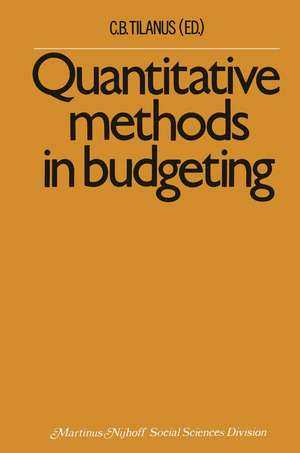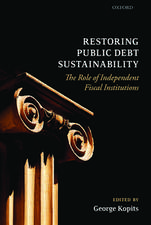Quantitative methods in budgeting
Editat de C.B. Tilanusen Limba Engleză Paperback – 8 noi 2011
Preț: 381.43 lei
Nou
Puncte Express: 572
Preț estimativ în valută:
72.99€ • 76.36$ • 60.63£
72.99€ • 76.36$ • 60.63£
Carte tipărită la comandă
Livrare economică 02-16 aprilie
Preluare comenzi: 021 569.72.76
Specificații
ISBN-13: 9781461343752
ISBN-10: 1461343755
Pagini: 188
Ilustrații: 182 p.
Dimensiuni: 152 x 229 x 10 mm
Greutate: 0.26 kg
Ediția:Softcover reprint of the original 1st ed. 1976
Editura: Springer Us
Colecția Springer
Locul publicării:New York, NY, United States
ISBN-10: 1461343755
Pagini: 188
Ilustrații: 182 p.
Dimensiuni: 152 x 229 x 10 mm
Greutate: 0.26 kg
Ediția:Softcover reprint of the original 1st ed. 1976
Editura: Springer Us
Colecția Springer
Locul publicării:New York, NY, United States
Public țintă
ResearchCuprins
1. Introduction.- 2. People and Techniques in Budgeting.- 2.1. The effectiveness of budget control systems.- 2.2. The wood and the trees.- 2.3. Potential psychological gains in using quantitative methods.- 2.4. Quantitative methods in assessing the social aspects of a control system.- 2.5. Conclusion.- 3. Balanced Transfer Values in Scheduling, Costing and Recompensing.- 3.1. Extended introduction and summary.- 3.2. Linear programming and accountancy.- 3.3. Models of the values as well as the measures of flows.- 3.4. Linking objects: transferrers of value.- 3.5. Balancing procedures: evaluation of intracompany trade.- 3.6. Degrees of freedom and channels of valuation.- 3.7. Ancillary interrelations in costing and recompensing.- 3.8. Recapitulation.- 4. Ratio Network Models and their Application in Budgeting.- 4.1. Ratio network models.- 4.2. Budgeting with the help of the ratio network method.- 5. The Development of a Budgeting Model.- 5.1. Introduction.- 5.2. The preliminary phase.- 5.3. The conceptual side.- 5.4. The general model.- 5.5. The first phase.- 5.6. The second phase.- 5.7. Conclusions with respect to the implementation.- Appendix 5.1. Mathematical description of the generalized model.- 6. Cost Accounting, Planning and Budgeting.- 6.1. Cost functions and product costing.- 6.2. The relations between production centres.- 6.3. Alternative production methods of economically homogeneous products.- 6.4. Planning, linear programming and unit costs.- 6.5. Planning, budgeting and costs.- 6.6. Example.- 7. Stochastic Budgeting.- 7.1. Introduction.- 7.2. Probability distributions.- 7.3. Some specific distributions.- 7.4. Relations between the variables.- 7.5. Computer program.- 7.6. Interval boundaries and policy.- 7.7. Concluding remarks.- Appendix 7.1. Flow-chart ofcomputer program.- Appendix 7.2. Interval exploitation budget.- Appendix 7.3. A definition of subjective probability.- 8. Variance Analysis, Flexible Budgeting and Responsibility Accounting.- 8.1. Classical variance analysis.- 8.2. The flexible-budgeting approach to variance analysis.- 8.3. Multi-stage, multidimensional variance analysis.- Appendix 8.1. Two-stage, two-dimensional variance analysis with flexible budgeting.- Appendix 8.2. Algebra and numerical example of two-stage, three-dimensional variance analysis with flexible budgeting.- 9. Where Short-Term Budget Meets Long-Term Plan.- 9.1. Next year’s budget in conflict with first year of long-term plan.- 9.2. Using budget pattern for disaggregation of long-term plan.- 9.3. The multiproportional RAS algorithm.- 9.4. Taking account of prior information.















